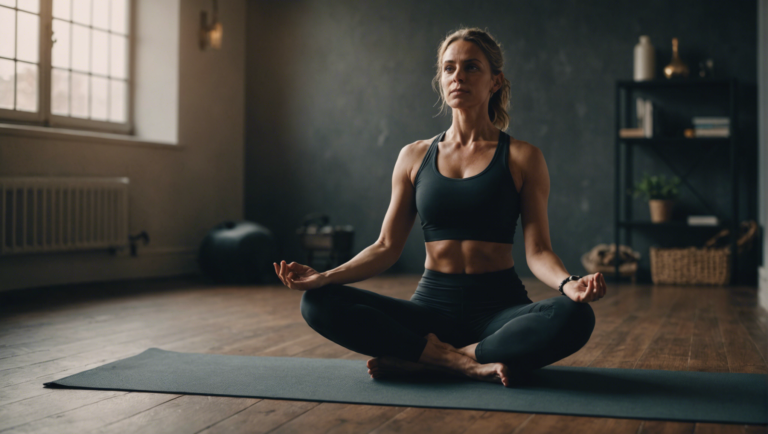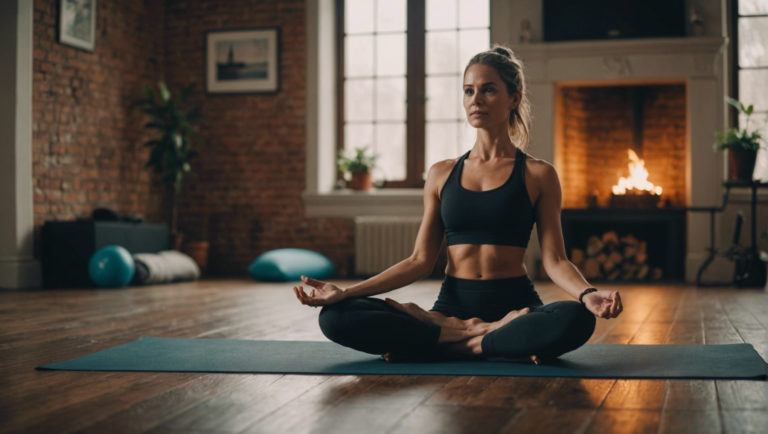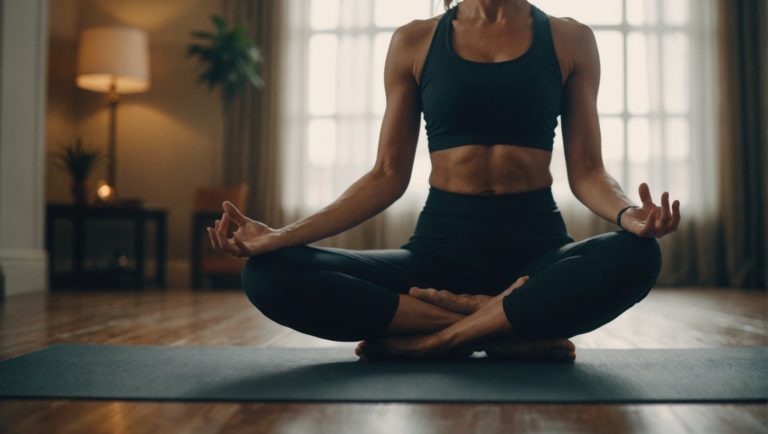Do Yoga Toes Really Work? Uncovering The Truth
The Science Behind Yoga Toes: Do They Really Work?
Understanding the Functionality of Yoga Toes
Yoga toes, often regarded as the solution for foot pain, discomfort, and a myriad of podiatric issues, have surged in popularity over recent years. These silicone-based devices are designed to fit between and beneath the toes, effectively spreading them apart to alleviate tension, enhance circulation, and improve overall foot health. But do they genuinely offer the benefits that many claim, or are they merely a wellness fad with no real backing? Let’s delve into the science and expert opinions to uncover the truth.
The Anatomy of Foot Discomfort and the Role of Yoga Toes
The human foot is a complex structure comprising bones, muscles, tendons, and ligaments, all working in harmony to provide support, balance, and mobility. However, common practices such as wearing ill-fitting shoes or leading a sedentary lifestyle can disrupt this harmony, leading to conditions like plantar fasciitis, bunions, and hammertoes. Yoga toes aim to counteract these problems by gently stretching the foot muscles and toes apart, promoting a natural, healthier alignment and encouraging stronger foot muscles through regular use.
Scientific Backing and Skepticism
While conclusive, large-scale studies on the effectiveness of yoga toes are sparse, several smaller studies and anecdotal evidence suggest potential benefits. For instance, users often report reduced foot pain and an increase in balance and foot strength over time. Experts theorize that by realigning the toes and stretching the plantar fascia, these devices may indeed provide relief from foot discomfort and improve foot function.
However, skepticism remains within parts of the medical community. Some professionals caution that while yoga toes may offer temporary relief, they’re not a cure-all solution or replacement for professional medical treatment. Critically, there’s a concern that overuse or misuse of these devices could potentially worsen foot problems, especially in individuals with pre-existing conditions.
Real-World Use and User Testimonials
Diving into the realm of user experiences provides further insight into the efficacy of yoga toes. Many users have shared their positive outcomes, citing improvements in foot pain, enhanced toe mobility, and even relief from the symptoms of bunions and hammertoes. Additionally, athletes and individuals standing for prolonged periods have noted benefits in terms of reduced discomfort and improved foot mechanics.
Integrating Yoga Toes into a Comprehensive Care Routine
To maximize the benefits of yoga toes, experts advise incorporating them into a broader foot health regimen. This includes routine exercises to strengthen the feet, wearing supportive footwear, and, when necessary, seeking professional advice for underlying foot conditions. It’s also recommended to start using yoga toes gradually, allowing the feet to adjust to the stretching and realigning process over time.
Expert Opinion and Final Thoughts
In the quest to uncover the truth about yoga toes, it appears that while they may not be a magical cure, they indeed hold potential benefits for improving foot health, particularly when used as part of a holistic approach to foot care. Users are encouraged to listen to their bodies, employ the devices wisely, and consult with healthcare professionals to ensure that yoga toes fit within their individual health regimens.
As we gravitate towards a more holistic understanding of health, integrating practices that foster overall well-being, such as using yoga toes, can be a positive step. However, it’s crucial to approach them with realistic expectations and a balanced view, recognizing that while beneficial, they are one piece of the puzzle in achieving optimal foot health and comfort.
Comparing Yoga Toes to Traditional Foot Care Practices
The Essence of Yoga Toes in Modern Foot Care
Exploring the domain of foot care uncovers a myriad of practices, from traditional methods that have been passed down through generations to modern innovations designed to alleviate discomfort and promote well-being. Among these contemporary solutions, Yoga Toes have emerged as a popular device, promising relief from foot pain, enhanced flexibility, and an overall improvement in foot health. But how do they stack up against time-honored foot care techniques?
Unpacking the Concept of Yoga Toes
Yoga Toes, essentially toe separators made from a soft, flexible material, are designed to stretch, spread, and exercise the toes. They aim to rectify the effects of cramped, ill-fitting shoes, standing for prolonged periods, and the natural aging process which can all contribute to foot issues. By gently separating the toes, these devices encourage proper alignment, enhance circulation, and relieve pressure on the foot muscles and joints.
Traditional Foot Care Practices: A Testament to Time
Contrastingly, traditional foot care practices encompass a broad spectrum of methods including massages, soaking in Epsom salts or essential oils, exercises designed to strengthen the foot’s musculature, and the use of wooden foot rollers. These techniques, rooted in centuries of wisdom, focus on manual therapies and natural remedies to address foot discomfort and promote health without the reliance on modern devices.
Comparative Analysis: Effectiveness and Applications
Addressing Common Foot Ailments
Both Yoga Toes and traditional practices show efficacy in managing common foot ailments. Yoga Toes excel in addressing issues stemming from toe misalignment such as bunions and hammertoes by providing a passive, yet impactful stretch. Traditional methods, especially massage and exercises, effectively relieve soreness, improve circulation, and enhance foot strength, offering a more hands-on approach to foot care.
User Experience and Accessibility
On the spectrum of user experience, Yoga Toes offer the convenience of a "wear and forget" approach, ideal for individuals with busy lifestyles or limited mobility. Meanwhile, traditional foot care practices often require time, technique, and sometimes another person’s assistance, which may not be feasible for everyone.
Long-term Benefits and Preventative Care
Both modalities promote long-term health benefits and preventative care, with Yoga Toes providing a structural alignment solution and traditional practices emphasizing overall foot strength and flexibility. The choice between them may come down to personal preference, specific foot care needs, and lifestyle considerations.
Synthesizing Modern and Ancient Foot Care Wisdom
In the pursuit of optimal foot health, it becomes apparent that a synergistic approach, blending the benefits of Yoga Toes with the rich heritage of traditional foot care practices, may offer the most comprehensive care. Adopting Yoga Toes for passive alignment and structural benefits, combined with massages, stretches, and other traditional techniques for muscle strength and relaxation, can create a holistic foot care regimen.
Embracing a Tailored Foot Care Ritual
Ultimately, the journey towards healthier feet involves understanding one’s unique foot care needs and preferences. Whether favoring the innovative approach of Yoga Toes, the grounded wisdom of traditional practices, or a combination of both, the goal is to cultivate a personalized foot care ritual that supports mobility, comfort, and overall well-being.
Given the distinct advantages and applications of both Yoga Toes and traditional foot care methods, individuals are encouraged to explore and integrate these practices thoughtfully. By doing so, one can navigate the path to improved foot health with informed confidence, leveraging the best of modern and ancient foot care wisdom.
User Experiences and Testimonials: Real Results from Yoga Toes
User Experiences with Yoga Toes: A Deep Dive into Actual Outcomes
In the realm of foot care and wellness, a unique product has been catching the attention of many seeking relief from foot pain, better balance, and overall foot health improvement. This product, known commonly as Yoga Toes, has garnered a mix of skepticism and curiosity. However, beyond marketing claims and scientific hypotheses, what truly illuminates the efficacy of Yoga Toes are the experiences and testimonials of real users. Through an analysis of these firsthand accounts, we aim to uncover the actual results achieved by individuals incorporating these toe separators into their daily routines.
Exploring the Claims: What Are Yoga Toes Supposed to Achieve?
Before delving into user experiences, it’s crucial to understand the purported benefits of Yoga Toes. These silicone-based toe separators are designed to stretch, spread, and exercise the toes, potentially offering a myriad of benefits. Among these claimed advantages are improved foot alignment, relief from conditions like bunions and hammertoes, enhanced balance, and a reduction in overall foot pain.
Evaluating Real-Life Outcomes: Testimonials Unveiled
Across numerous platforms, from product reviews to wellness forums, individuals have shared their journeys with Yoga Toes. A recurring theme in these testimonials is the significant relief from foot pain. For many, years of discomfort due to conditions such as plantar fasciitis and bunions have been mitigated after regular use of Yoga Toes. The gradual stretching and realignment of the toes have led to a noticeable decrease in pain, contributing to an enhanced quality of life for these users.
Equally compelling are the accounts of improved foot function and balance. Athletes and yoga practitioners, in particular, have reported a marked enhancement in their physical activities. The increased toe strength and flexibility garnered through Yoga Toes usage have translated to better stability and performance in their respective disciplines.
Scientific Backing vs. Anecdotal Evidence: Striking a Balance
While user testimonials heavily favor the effectiveness of Yoga Toes, it’s important to juxtapose these experiences with the scientific research available. Admittedly, the scientific community has offered limited studies on the specific benefits of toe separators like Yoga Toes. This gap in research highlights the importance of relying on a combination of anecdotal evidence and existing knowledge on foot health and mechanics to form a well-rounded view.
Insights from Podiatrists and Foot Care Specialists
The insights of healthcare professionals specializing in foot care add another layer of credibility to the discussion on Yoga Toes. Podiatrists have pointed out that while Yoga Toes may not be a cure-all, they serve as a valuable tool in the broader spectrum of foot health management. Specifically, these specialists underscore the benefits of toe separators in promoting better toe alignment and stretching, which can complement other treatments and exercises aimed at foot health improvement.
Making an Informed Decision: Is It Worth Trying?
Given the overwhelmingly positive user experiences coupled with cautious endorsements from health professionals, the case for trying Yoga Toes is strong for those battling foot discomfort or seeking preventive care. However, as with any wellness tool, individual outcomes can vary. Prospective users are encouraged to approach Yoga Toes as part of a comprehensive foot care regime, considering both the potential benefits and the limitations as indicated by current research and expert opinions.
The real-world results from Yoga Toes paint a promising picture of this unconventional foot care tool. While not devoid of critiques and calls for more rigorous scientific evaluation, the personal successes shared by many provide a compelling reason to consider Yoga Toes as a component of one’s foot health strategy. Future research may further illuminate the efficacy of Yoga Toes, but for now, the testimonials of those who have experienced its benefits firsthand offer valuable insights into its potential to improve foot wellness.
Incorporating Yoga Toes into Your Daily Wellness Routine
Why Daily Wellness Routines Benefit from Yoga Toes
In the quest for holistic health and daily wellness, attention often falls on diet, exercise, and mental health practices. Yet, the wellbeing of our feet—the very foundation that carries us through life—frequently gets overlooked. Herein lies the value of Yoga Toes, a tool designed to stretch and strengthen foot muscles, improve circulation, and realign joints. Their role in a daily wellness routine merits a closer look, given the potential benefits they offer in enhancing foot health and, by extension, overall wellbeing.
The Science Behind Yoga Toes
Yoga Toes work by separating the toes, stretching the foot muscles, and encouraging proper alignment. This can alleviate the stress and strain daily activities impose on our feet. Considering the complex structure of the foot, with its 26 bones, 33 joints, and more than a hundred muscles, tendons, and ligaments, it’s clear that maintaining foot health is crucial for overall physical well-being. Yoga Toes target this intricate anatomy, potentially providing relief from common ailments such as plantar fasciitis, bunions, and hammertoes.
Integrating Yoga Toes into Your Routine
Adding Yoga Toes to your daily wellness regimen need not be a cumbersome process. Start by wearing them for a few minutes each day, gradually increasing the duration as your feet become accustomed to the stretch. This can be done while reading, working at your desk, or relaxing in the evening. The key is consistency and gradually building up tolerance and flexibility in the foot muscles and joints.
Expert Opinions and Testimonials
Health professionals, including podiatrists and physiotherapists, have weighed in on the effectiveness of toe stretchers like Yoga Toes. Many endorse them as a supplementary treatment for foot conditions, emphasizing their potential to improve foot posture and flexibility. Testimonials from users who have experienced relief from foot pain and discomfort further support these claims, though individual results can vary. It’s important to consult with a healthcare provider to ensure they fit into your health regimen appropriately.
Beyond Foot Health: The Holistic Impact
The benefits of Yoga Toes extend beyond mere physical health. For many, the practice of caring for their feet develops into a mindful routine that promotes relaxation and stress relief. In the broader context of a wellness routine, they serve as a reminder of the interconnectedness of body parts and the importance of nurturing our foundation. As our feet become stronger and more aligned, we may notice improvements in posture, balance, and even the way we move.
Making the Most of Your Practice
To maximize the benefits of using Yoga Toes, consider pairing their use with other foot care practices. Gentle foot massages, warm soaks, and exercises designed to strengthen the arches and ankles can complement the effects of Yoga Toes. Additionally, wearing comfortable, well-fitting shoes during the day supports the health benefits and comfort these devices offer.
Final Thoughts on Enhancing Daily Wellness
The inclusion of Yoga Toes in a daily wellness routine stands as a testament to the principle that health is holistic and multidimensional. By focusing on the health of our feet, we can unlock a range of benefits that contribute to our overall wellbeing. As with any wellness tool, individual experiences will vary, and it’s important to approach this practice with patience and consistency. With time, Yoga Toes may not just improve the way your feet feel but enhance your overall quality of life.
Potential Risks and Considerations When Using Yoga Toes
Exploring the Fascinating World of Yoga Toes Devices
Yoga toes, often hailed as a panacea for foot pain, have garnered attention in wellness circles for their purported benefits, which range from improved toe alignment to enhanced foot strength. Yet, as with any product that gains rapid popularity, it’s crucial to consider potential risks and considerations before incorporating these devices into your routine.
Understanding the Functionality of Yoga Toes
Yoga toes are silicone or gel devices that fit between your toes, gently spreading them apart, purportedly enhancing flexibility and circulation while relieving foot pain. They are designed based on the premise that our feet, often constricted by tight-fitting or high-heeled shoes, can benefit from some stretching and realignment. While the concept is grounded in the broader principles of yoga—promoting balance, strength, and flexibility—the application directly to the toes introduces a novel approach to foot health.
Potential Benefits and the Rationale Behind Them
Many users report reduced discomfort in their feet after using yoga toes, citing improvements in conditions such as hammertoes, bunions, and plantar fasciitis. The theory is that by stretching and separating the toes, the muscles, ligaments, and tendons in the foot can be lengthened and strengthened, potentially correcting the misalignments and providing relief from the pain.
Recognizing Potential Risks and Cautions
Despite the potential benefits, certain risks and considerations require attention to ensure the safe use of yoga toes. Not all feet are the same, and what works for one individual may not work for another, highlighting the need for a customized approach to foot care.
Risk of Overstretching and Strain
One of the primary concerns with these devices is the risk of overstretching or straining the muscles and ligaments around the toes and feet. Overuse or incorrect use can lead to discomfort, pain, or even exacerbate existing foot conditions. Beginners, especially, should start with shorter durations of use and gradually increase as their feet adjust to the device.
Not a Substitute for Medical Advice
Another critical consideration is that yoga toes should not be seen as a cure-all or substitute for professional medical advice. Individuals with severe foot deformities, pain, or other medical conditions related to their feet should consult a healthcare provider before using yoga toes or similar devices.
Compatibility with Your Foot Health History
Personal health history plays a significant role in determining whether yoga toes are appropriate for you. For instance, individuals with diabetes or circulatory issues should exercise caution, as these conditions can lead to decreased sensitivity in the feet, making it harder to recognize when something is wrong. Understanding your health status and how it might interact with the use of yoga toes is essential.
Best Practices for Safe Use
To maximize the benefits of yoga toes while minimizing risks, here are a few guidelines:
- Start Slowly: Begin by wearing yoga toes for short periods—no more than 10-15 minutes a day—and gradually increase as comfort allows.
- Listen to Your Feet: Pay attention to any signs of discomfort or pain. If you experience adverse effects, discontinue use and consult a specialist.
- Combine with Other Foot Care Practices: Consider yoga toes as part of a comprehensive foot care regime that includes regular stretching, strengthening exercises, and wearing supportive footwear.
The Verdict on Yoga Toes
While yoga toes offer an intriguing solution to common foot ailments, they are not without their potential drawbacks. The key to safely reaping their benefits lies in mindful use, incorporating them judently into a holistic approach to foot health, and recognizing when to seek professional guidance. As always, personal well-being should be the priority, with tools like yoga toes serving as supplementary, rather than primary, solutions to maintaining foot health and mobility.
Conclusion
Understanding the efficacy of Yoga Toes requires a multidimensional approach that includes scrutinizing scientific research, comparing these devices with established foot care methods, evaluating anecdotal evidence, and acknowledging the potential risks alongside the benefits. This comprehensive exploration not only sheds light on Yoga Toes’ practicality but also places them within the broader context of foot health and daily wellness practices.
The science behind Yoga Toes is fundamentally based on the concept of passive stretching and its benefits on the musculoskeletal structure of the foot. Studies and biomechanical theories suggest that regularly spreading the toes apart can improve foot health by enhancing circulation, correcting alignment issues, and relieving stress on the feet. While the clinical evidence specific to Yoga Toes is somewhat limited, the principles they are designed upon are widely recognized in physical therapy and sports medicine for their benefits in promoting flexibility, reducing discomfort, and preventing common foot ailments.
When comparing Yoga Toes to traditional foot care practices, it’s essential to recognize the uniqueness of Yoga Toes in their approach to foot health. Traditional methods often emphasize active exercises, massage, and the use of supportive footwear. Yoga Toes offer a passive, yet consistent, way to stretch and strengthen the feet. This doesn’t negate the importance of conventional practices but highlights Yoga Toes as a complementary tool that can enhance overall foot care regimen by providing a unique form of stretch and relaxation to the foot muscles and joints not easily achieved through other means.
User experiences and testimonials present a wide array of outcomes, with many individuals reporting significant improvements in foot discomfort, toe alignment, and overall foot function. These personal accounts serve as powerful anecdotal evidence supporting the utility of Yoga Toes in managing conditions such as hammertoes, bunions, and plantar fasciitis. It’s crucial, however, to balance these optimistic narratives with a critical perspective, acknowledging that individual results may vary and what works for one person may not be effective for another.
Yoga Toes into one’s daily wellness routine appears to be a minimal effort with potential substantial benefits. Whether used while relaxing at home, during meditation, or as part of a pre-existing foot care regimen, Yoga Toes can seamlessly integrate into various lifestyles. This ease of incorporation, coupled with the passive nature of the device, makes Yoga Toes a convenient and accessible tool for those looking to enhance their foot health without significant adjustments to their daily routines.
Nevertheless, potential risks and considerations must not be overlooked. Users must be aware of their personal foot health status, recognizing situations where Yoga Toes might exacerbate existing conditions or not be suitable, such as severe vascular diseases of the feet, uncontrolled diabetes with neuropathy, or extreme deformities where the device may cause harm. Consulting with a healthcare provider before starting any new foot care routine, including the use of Yoga Toes, is always advisable to ensure safety and appropriateness.
Yoga Toes, with their simple yet innovative design, stand at the intersection of traditional foot care and modern wellness approaches. They encapsulate a holistic perspective on health, emphasizing not just the physical but also the potential mental and emotional benefits derived from taking the time to care for one’s feet. The blend of scientific insights, comparative advantages, user testimonies, and the ease with which they can be adopted into daily life paints a compelling picture of Yoga Toes as a beneficial adjunct to foot health practices. However, the journey to optimal foot health should always be undertaken with mindfulness, considering individual circumstances, and, when necessary, professional advice. Through such a balanced approach, individuals can make informed decisions about incorporating Yoga Toes into their wellness routines, potentially reaping the benefits while mitigating the risks.



